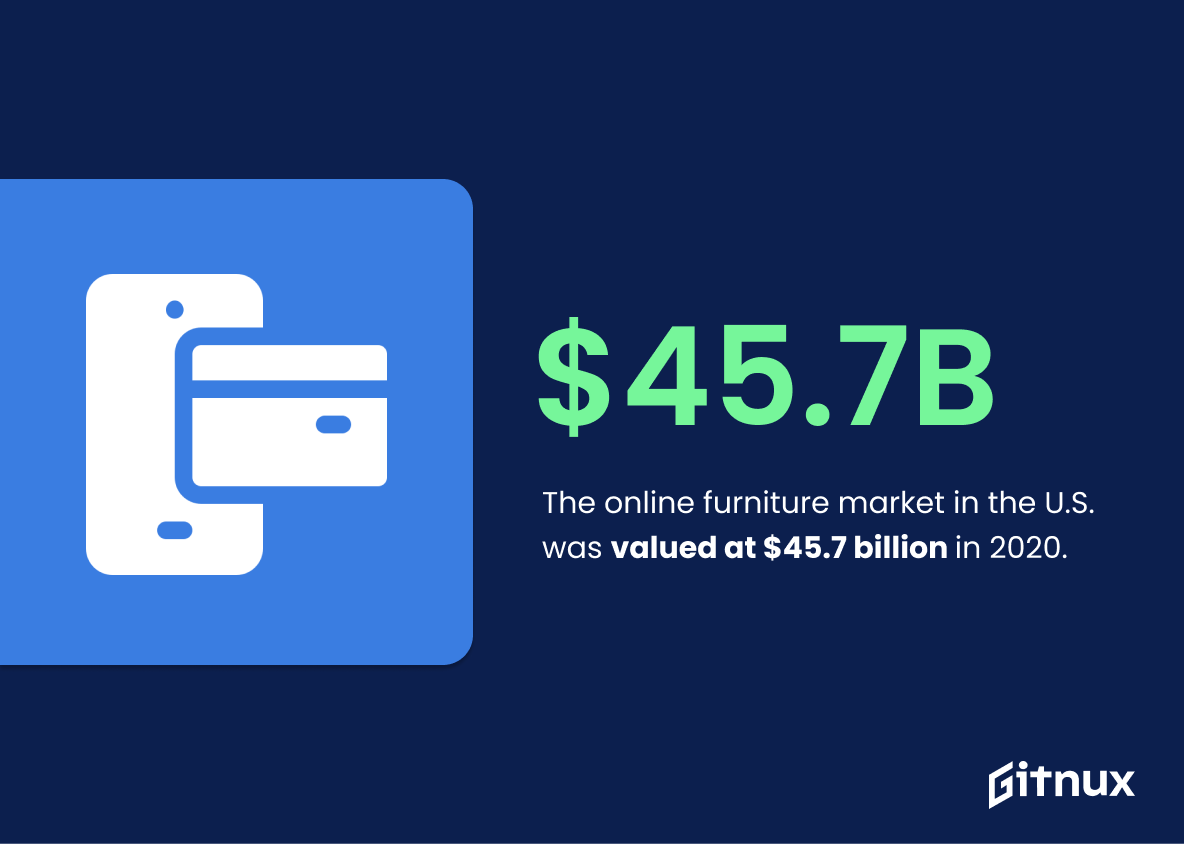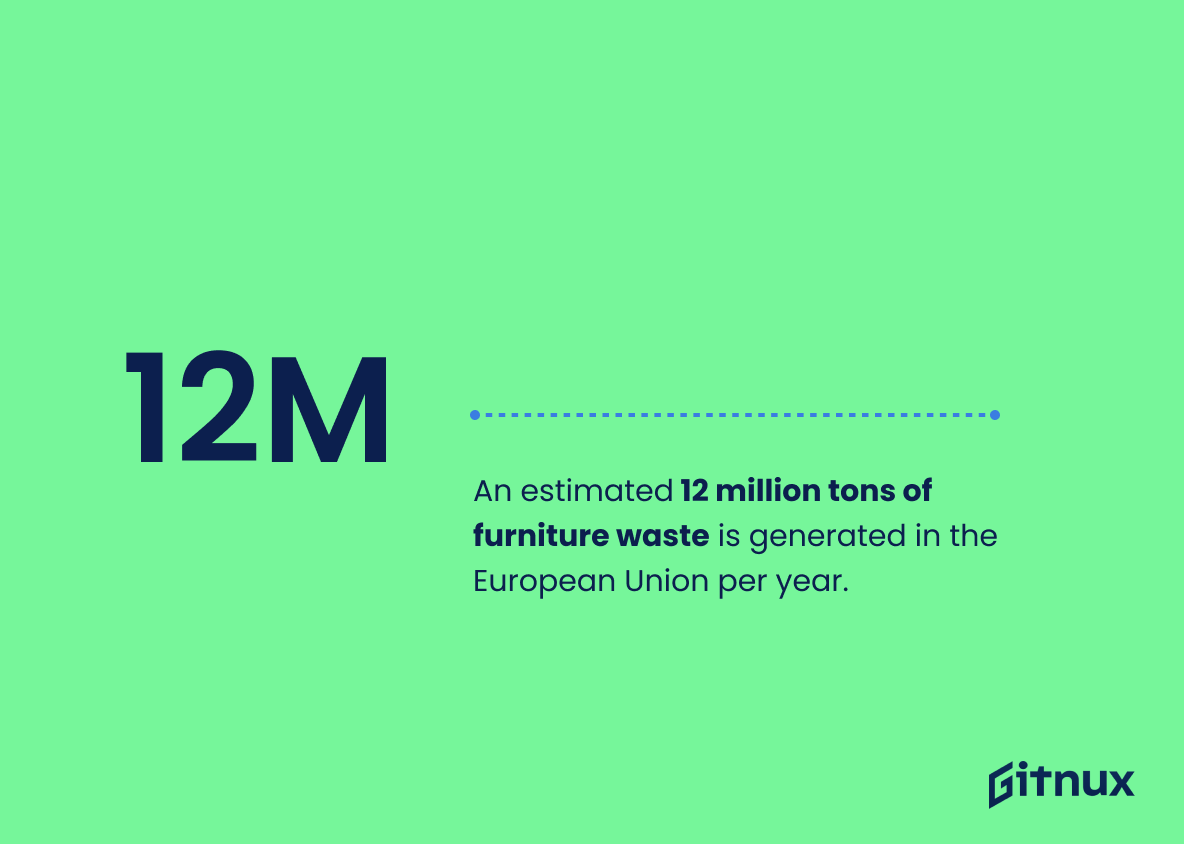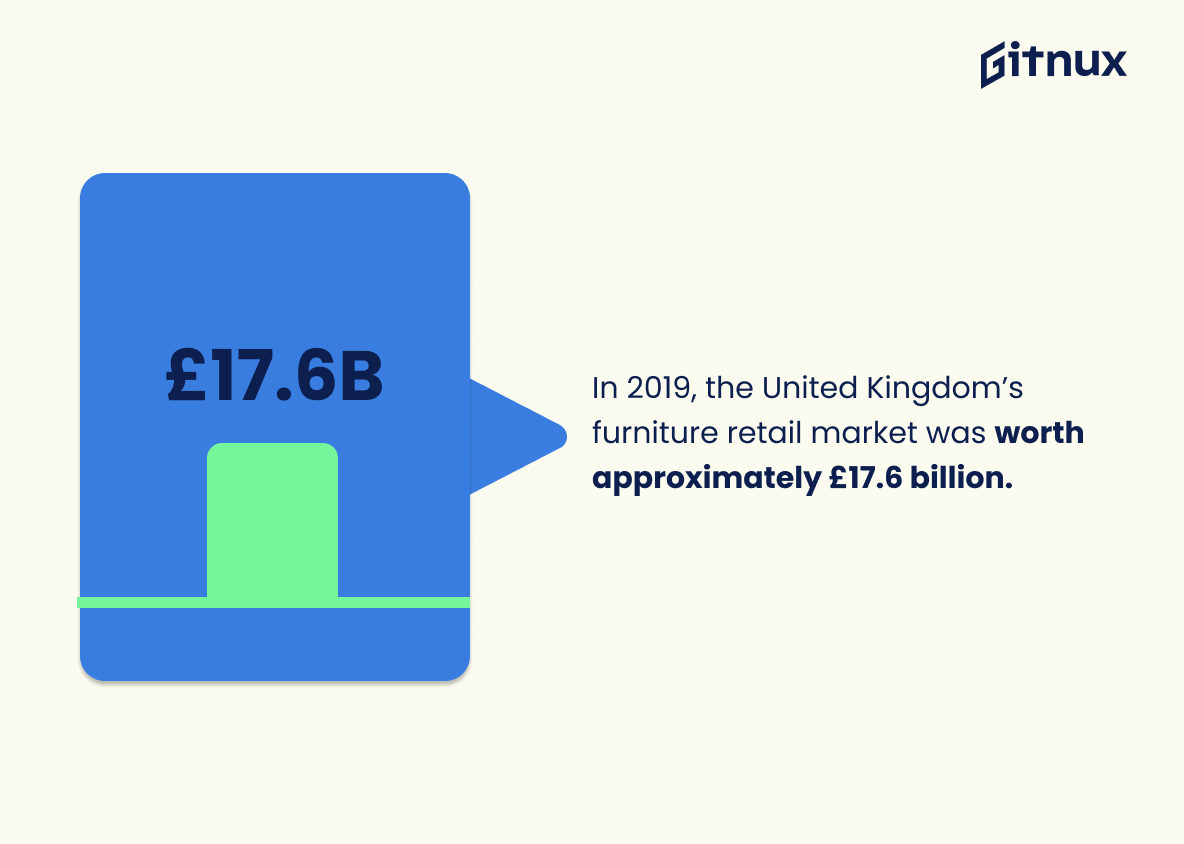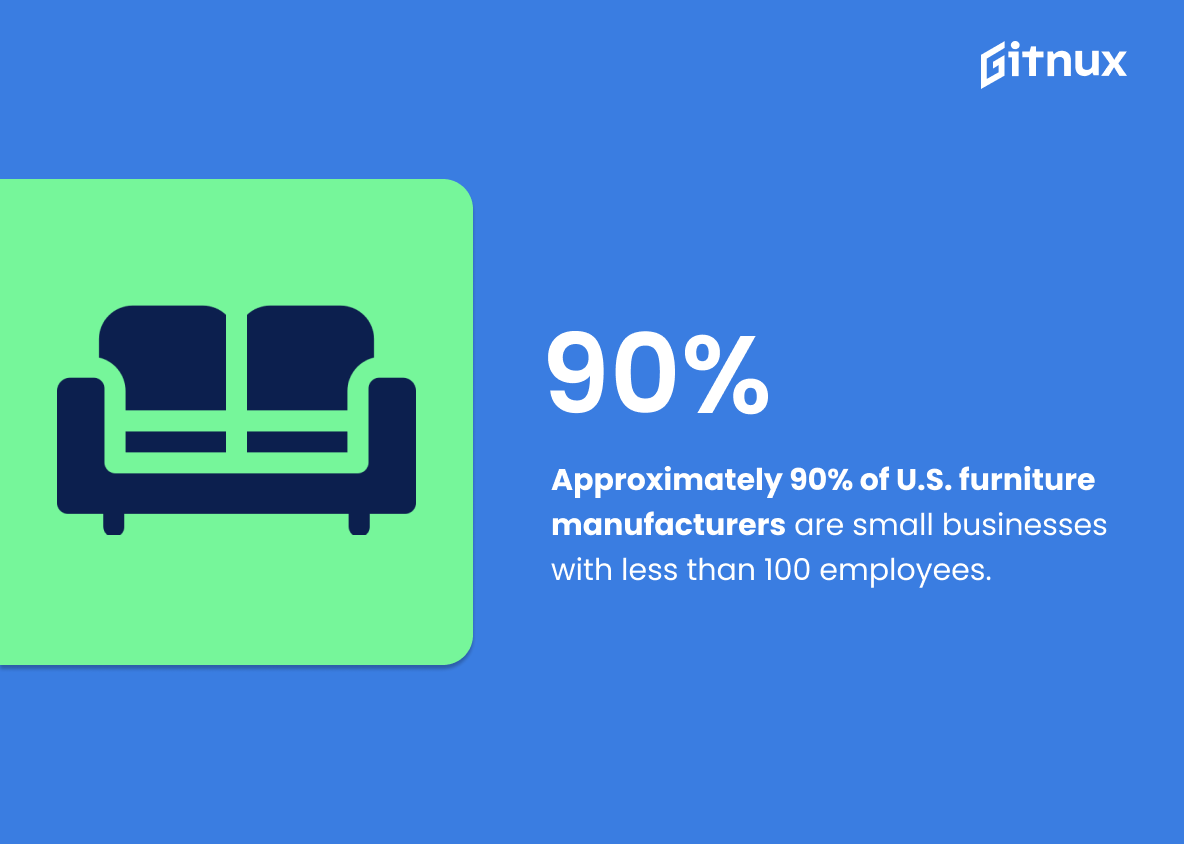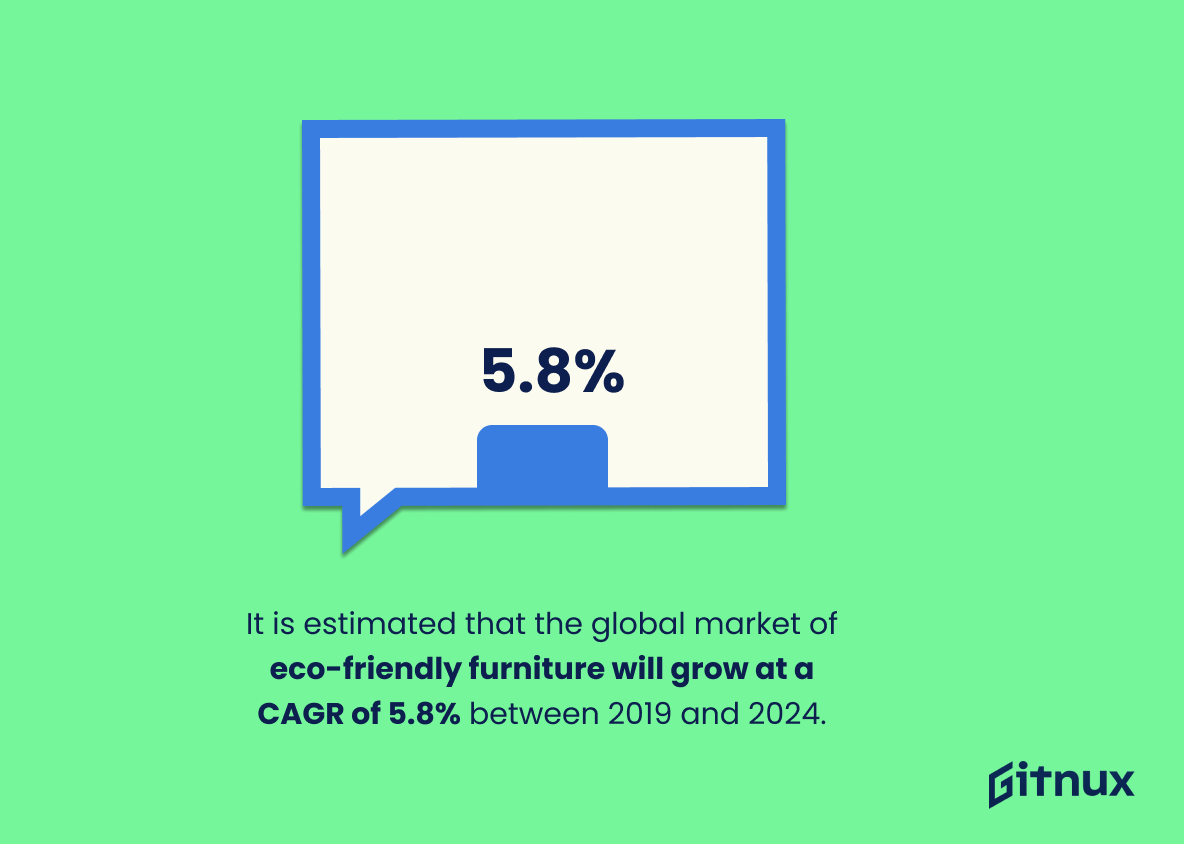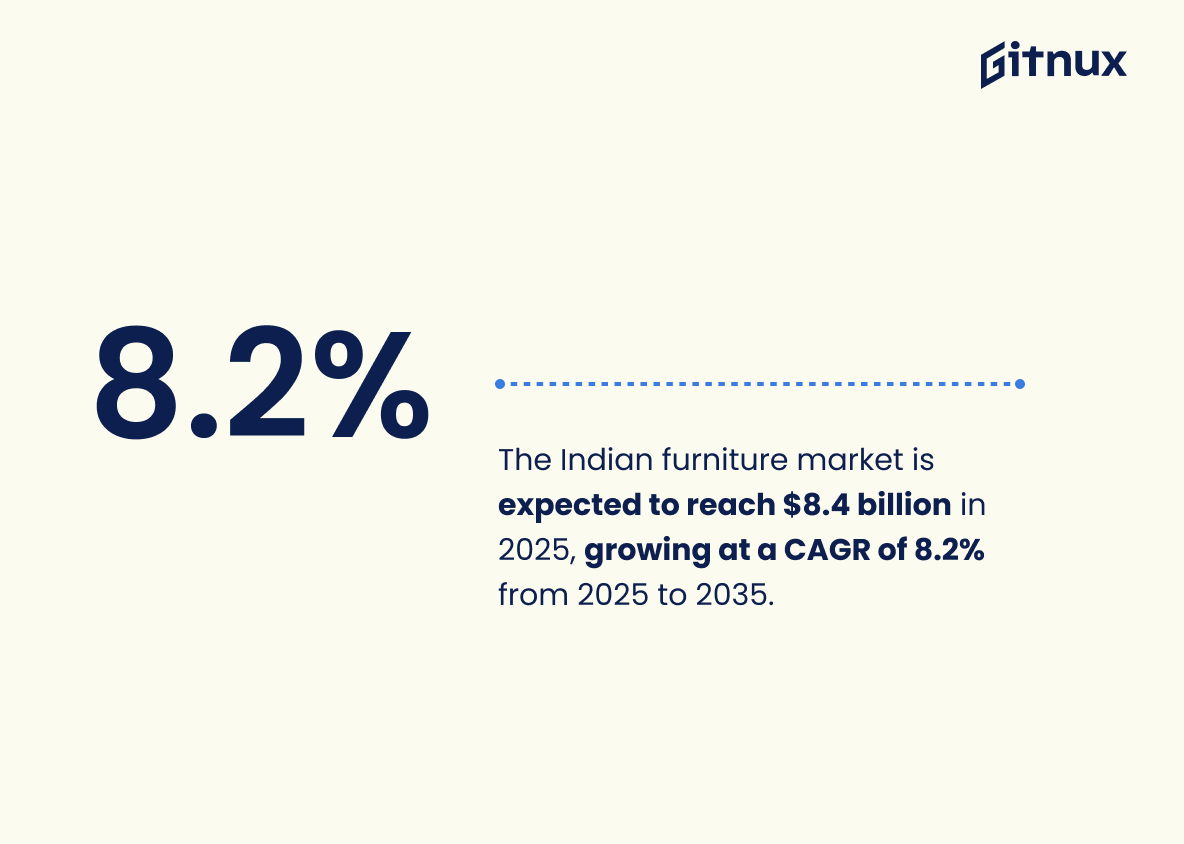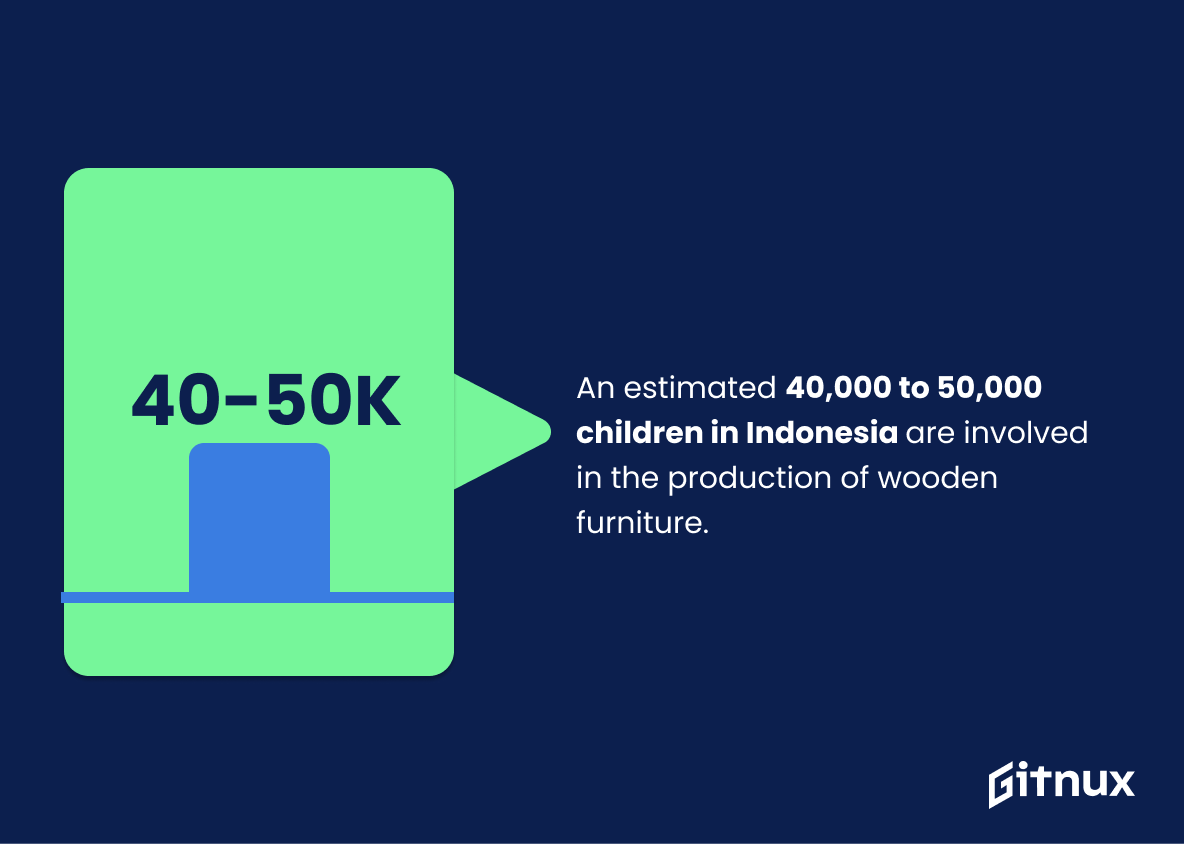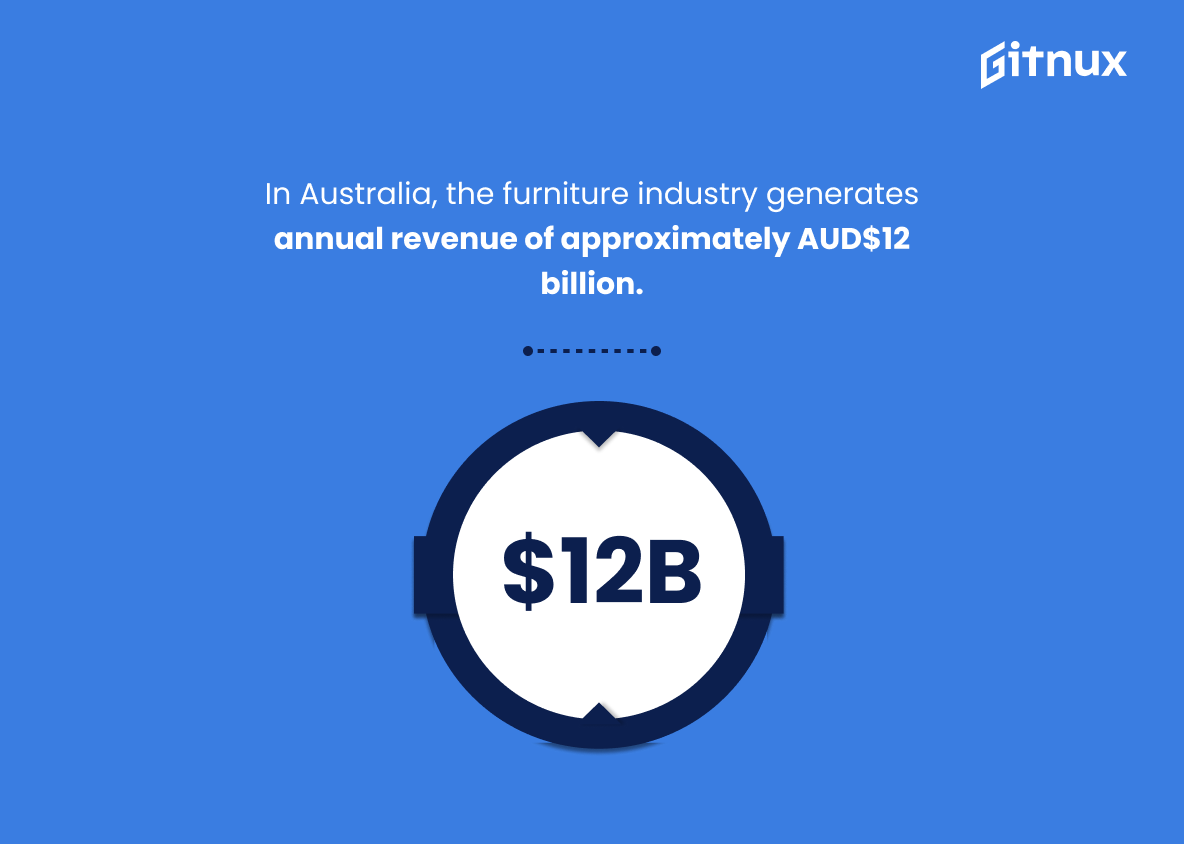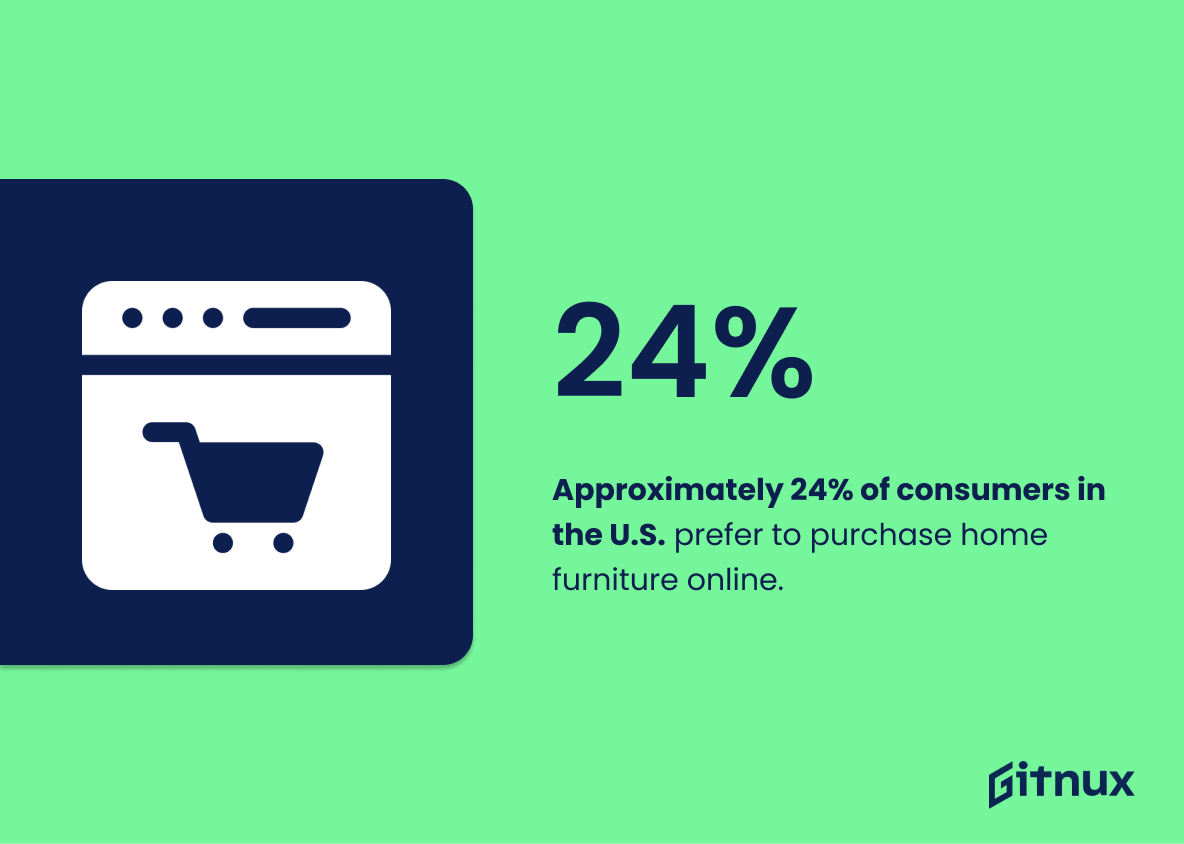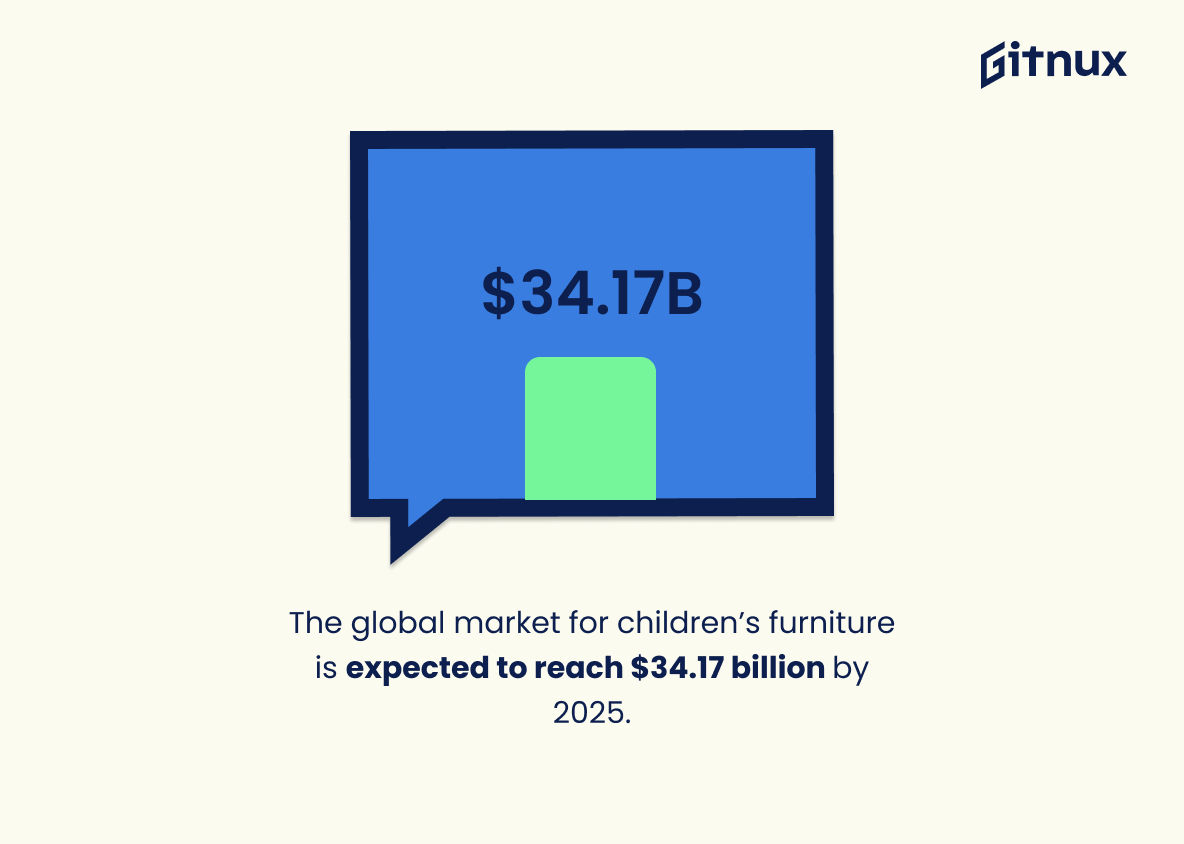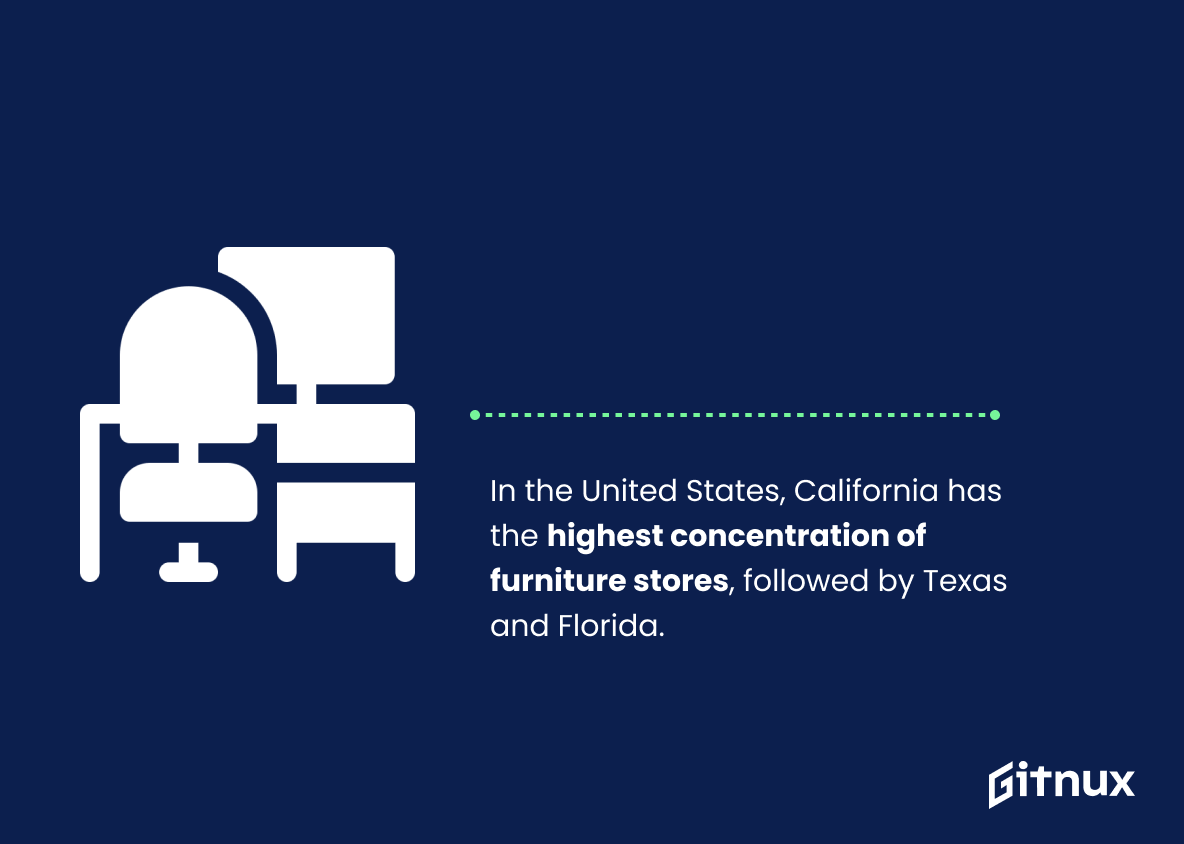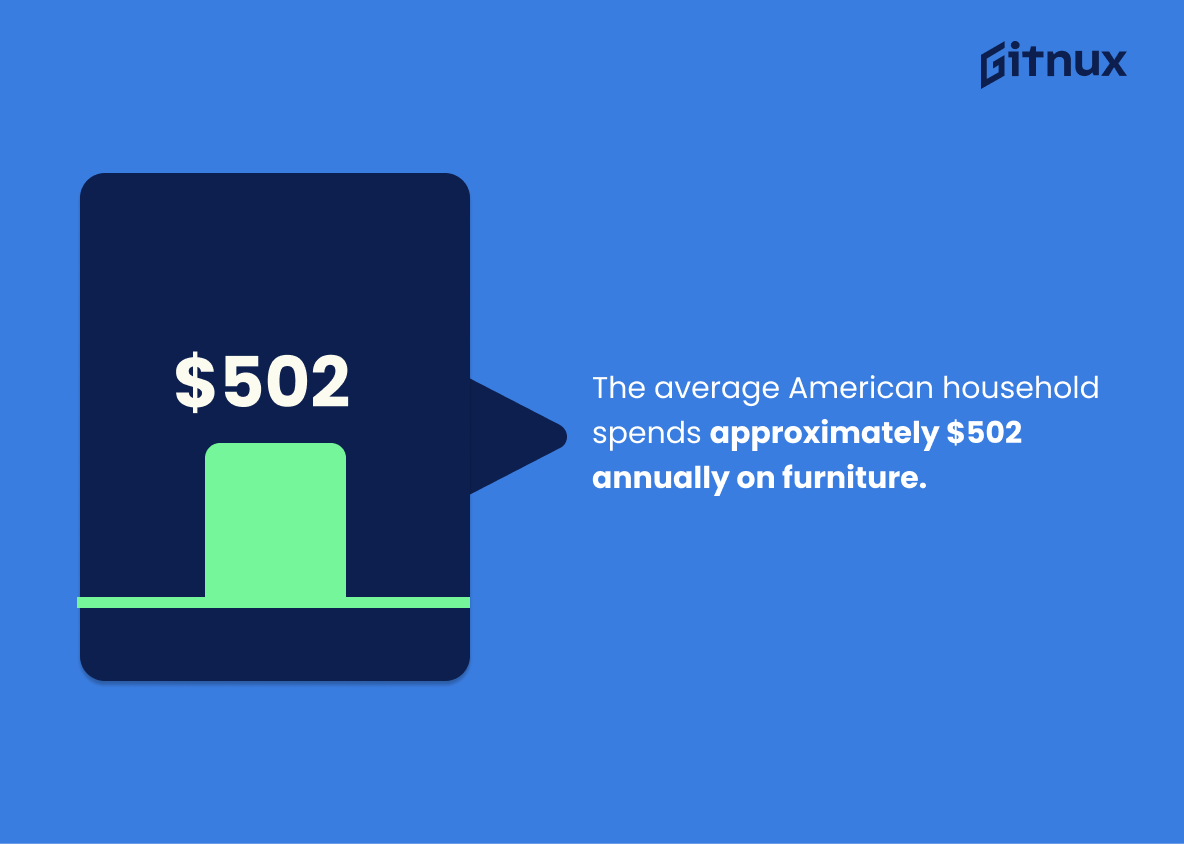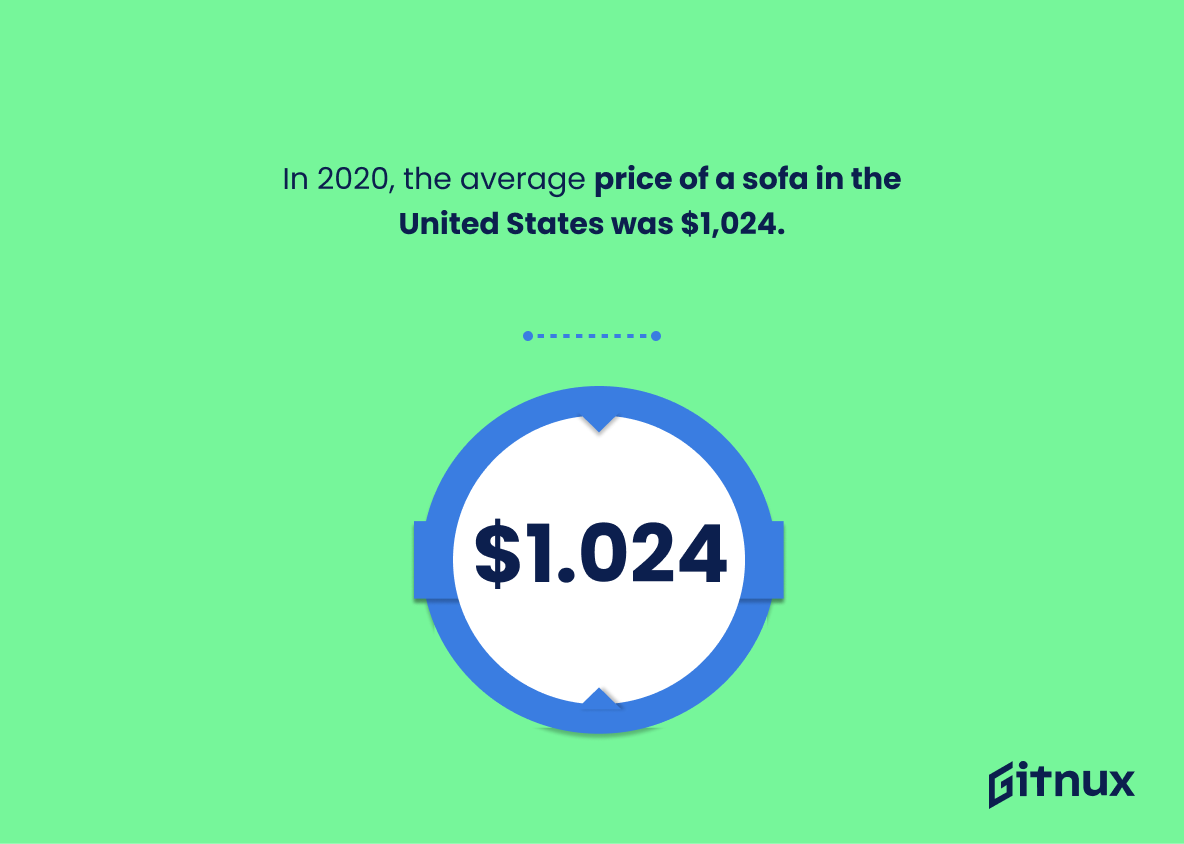The global furniture market is a multi-billion dollar industry that continues to grow year after year. This blog post will explore the current state of the furniture market, including statistics on its size and growth rate, as well as information about related injuries, online sales trends, exports and imports from different countries around the world, waste production in Europe, retail markets in various regions such as the United Kingdom and Australia; outdoor furniture trends; small business involvement within U.S. manufacturing; eco-friendly initiatives; child labor issues in Indonesia; consumer preferences for purchasing home furnishings online or offline in America; table accident rates among Americans each year; children’s furniture markets worldwide ; concentration of stores by region (e.g., California); average annual spending per household on furnishing items across America ; unfinished wood product sales figures domestically ; brand value of IKEA -the largest retailer globally –and more.
This statistic is a powerful indicator of the potential of the furniture market in the coming years. It shows that the industry is expected to experience significant growth, with a CAGR of 6.8%, which is a strong indication of the potential for businesses to capitalize on the expanding market. This data is essential for anyone looking to gain insight into the furniture industry and make informed decisions about their investments.
Approximately 33% of furniture-related injuries in the U.S. are caused by falls from chairs.
This statistic is a stark reminder of the importance of taking proper safety precautions when using furniture. It highlights the need for people to be aware of the potential risks associated with chairs, and to take steps to ensure that they are using them safely. It also serves as a warning to furniture manufacturers to ensure that their products are designed with safety in mind.
Furniture Statistics Overview
The online furniture market in the U.S. was valued at $45.7 billion in 2020.
This statistic is a testament to the immense size of the online furniture market in the U.S. It highlights the fact that the industry is booming and that there is a huge demand for furniture products. It also shows that the industry is growing at a rapid rate, indicating that it is a lucrative market for businesses to enter. This statistic is an important piece of information for anyone interested in the furniture industry, as it provides a snapshot of the current state of the market.
In 2019, China was the largest exporter of furniture, with a global market share of 36.8%.
This statistic is a testament to the fact that China is a major player in the furniture industry. It highlights the country’s dominance in the global market, with a share of nearly 37%. This statistic is important for anyone looking to gain insight into the furniture industry, as it provides a clear indication of the current state of the market. Furthermore, it can be used to inform decisions about where to source furniture from, as well as to identify potential opportunities for growth.
An estimated 12 million tons of furniture waste is generated in the European Union per year.
This statistic is a stark reminder of the sheer amount of furniture waste generated in the European Union each year. It highlights the need for more sustainable practices when it comes to furniture production and disposal, as well as the need for more efficient recycling and reuse of furniture. This statistic serves as a call to action for those in the furniture industry to take steps to reduce their environmental impact.
In 2019, the United Kingdom’s furniture retail market was worth approximately £17.6 billion.
This statistic is a testament to the immense size of the UK’s furniture retail market. It highlights the sheer scale of the industry and the potential for growth and development. It also serves as a reminder of the importance of the furniture retail sector to the UK economy, and the need for businesses to stay competitive in order to remain successful.
The global market for outdoor furniture is predicted to reach $26.6 billion by 2026.
This statistic is a powerful indicator of the potential for growth in the outdoor furniture market. It shows that the industry is expected to experience a significant increase in demand over the next few years, making it an attractive investment opportunity for those looking to capitalize on the trend. Furthermore, it provides valuable insight into the current state of the market, allowing businesses to better plan their strategies and capitalize on the potential for growth.
Approximately 90% of U.S. furniture manufacturers are small businesses with less than 100 employees.
This statistic is a powerful reminder of the importance of small businesses in the furniture industry. It highlights the fact that the majority of furniture manufacturers in the US are small businesses, which are often the backbone of the economy. This statistic is a testament to the hard work and dedication of these small businesses, and it is a reminder of the importance of supporting them.
It is estimated that the global market of eco-friendly furniture will grow at a CAGR of 5.8% between 2019 and 2024.
This statistic is a valuable insight into the future of the furniture industry, as it indicates that eco-friendly furniture is becoming increasingly popular. This suggests that consumers are becoming more conscious of their environmental impact and are looking for ways to reduce their carbon footprint. As such, this statistic is an important indicator of the direction the furniture industry is heading in, and could be used to inform decisions about the types of furniture to invest in.
The Indian furniture market is expected to reach $8.4 billion in 2025, growing at a CAGR of 8.2% from 2025 to 2035.
This statistic is a powerful indicator of the potential of the Indian furniture market in the coming years. It shows that the market is expected to grow significantly over the next decade, with a compound annual growth rate of 8.2%. This is an exciting prospect for furniture businesses, as it suggests that the industry is likely to experience a period of sustained growth and expansion. As such, this statistic is an important piece of information for anyone interested in the furniture industry, and should be taken into consideration when making decisions about investments and strategies.
An estimated 40,000 to 50,000 children in Indonesia are involved in the production of wooden furniture.
This statistic is a stark reminder of the reality that child labor is still a major issue in the furniture industry. It highlights the need for greater awareness and action to ensure that children are not exploited in the production of wooden furniture. It also serves as a call to action for companies to take steps to ensure that their supply chains are free from child labor.
In Australia, the furniture industry generates annual revenue of approximately AUD$12 billion.
This statistic is a testament to the immense size and scope of the furniture industry in Australia. It highlights the fact that furniture is a major contributor to the country’s economy, and that it is an important part of the lives of many Australians. This statistic is a reminder of the importance of the furniture industry and its impact on the nation’s economy.
Approximately 24% of consumers in the U.S. prefer to purchase home furniture online.
This statistic is significant in the context of furniture statistics because it indicates that a large portion of consumers in the U.S. are turning to the internet to purchase furniture. This shift in consumer behavior has implications for furniture retailers, as they must now consider how to best reach and serve this growing online customer base.
The global market for children’s furniture is expected to reach $34.17 billion by 2025.
This statistic is a clear indication of the immense potential of the children’s furniture market. It shows that the industry is growing rapidly and is expected to continue to do so in the coming years. This means that businesses in this sector have a great opportunity to capitalize on this growth and make a profit. Furthermore, this statistic can be used to inform decisions about investments in the children’s furniture market, as well as to provide insights into the current and future trends in the industry.
In the United States, California has the highest concentration of furniture stores, followed by Texas and Florida.
This statistic is significant in the context of a blog post about Furniture Statistics because it provides insight into the geographical distribution of furniture stores in the United States. It reveals that California has the highest concentration of furniture stores, followed by Texas and Florida, indicating that these states are the most popular destinations for furniture shopping. This information can be used to inform decisions about where to open new furniture stores or where to focus marketing efforts.
The average American household spends approximately $502 annually on furniture.
This statistic is a telling indication of the importance of furniture in the lives of the average American household. It shows that furniture is a significant part of the budget for many households, and that it is an important part of their lives. This statistic is a valuable piece of information for anyone looking to gain insight into the furniture industry and the spending habits of the average American household.
In 2020, the average price of a sofa in the United States was $1,024.
This statistic is a valuable insight into the current state of the furniture market in the United States. It provides a snapshot of the average cost of a sofa, which can be used to compare prices across different retailers and brands. Additionally, it can be used to gauge the overall affordability of furniture in the US, and to identify trends in pricing over time.
Unfinished wood furniture accounts for about 10% to 15% of total furniture sales in the United States.
This statistic is a telling indication of the popularity of unfinished wood furniture in the United States. It shows that a significant portion of furniture sales are attributed to this type of furniture, indicating that it is a popular choice among consumers. This is an important piece of information for anyone looking to gain insight into the furniture market in the United States.
In 2021, IKEA, the world’s largest furniture retailer, had a brand value of $22.8 billion.
This statistic is a testament to the immense success of IKEA as the world’s largest furniture retailer. It speaks to the company’s ability to create a strong brand presence and to generate a high level of customer loyalty. It also highlights the importance of furniture in the global economy, as IKEA’s brand value is indicative of the overall size and strength of the furniture industry.
Conclusion
The global furniture market is a vast and ever-evolving industry, with many different facets. From the expected growth of the overall market to specific regional trends, there are numerous statistics that provide insight into this dynamic sector. The data presented in this blog post highlights some key facts about the current state of furniture production and consumption around the world.
It also reveals how certain countries have become major players in terms of exports or imports, as well as which retailers dominate their respective markets. Additionally, it sheds light on important issues such as environmental sustainability and child labor within the industry. All these factors contribute to making up an incredibly complex yet fascinating landscape for anyone interested in learning more about furniture today.
References
0. – https://www.ilo.org
1. – https://www.worldstopexports.com
2. – https://www.usatoday.com
3. – https://www.mordorintelligence.com
4. – https://www.consumerreports.org
5. – https://www.globenewswire.com
6. – https://www.statista.com
7. – https://www.ibisworld.com
8. – https://www.eea.europa.eu
9. – https://www.postandcourier.com
10. – https://www.federalregister.gov
11. – https://www.researchnester.com
